It’s Now or Never
Sadly, there will be a World War III some day. At this point the only question is will it be a financial war or a military conflagration, you know, the kind with bombs and soldiers and such. We already know who will be “the Axis and the Allies,” to use the terms of the combatants in the last World War. On one side will be the West, which is very misleading because it includes countries from all across the globe includ ing America, Australia, Canada, Japan, Mexico, much of Europe and part of Africa. The ‘Axis’ will be what are now known as the BRIC countries, which is an acronym for the developing nations of Brazil, Russia, India, and China. BRIC currently in cludes the two biggest coun tries by population with China at 1,425,887,337 people and India with 1,417,173,173. The United States is in third place at 338,289,857. You math whiz zes will quickly see that we have only about one tenth of the pop ulation of the two of the biggest BRIC’s.
Population is just one reason that most economists and politi cians feel that the BRIC coun tries will be THE dominant sup pliers and users of manufactured goods, services, food, and raw materials by 2050. As currently conceived, BRIC also includes three of the largest countries by size and, if you want to get really dramatic about it, three of the four BRIC countries al ready have well developed nu clear weapon capabilities and the fourth, Brazil, does possess some of the key technologies needed to produce nukes.
Historians say that a great upheaval like a war or a global
pandemic occurs in the world about once every 80 years. Let’s see, if we add 80 years to the time of the last World War we get 2020! And one wrong move by the mad man Putin, like un leashing one of Russia’s nukes,
50 to 100 million. COVID 19 doesn’t even compare to the death toll of AIDS at 25 to 35 million people. So although COVID has changed our world forever in countless ways, it is not the BIG EVENT historians
plan to use to replace the dollar which has been the de facto cur rency for international trade for nearly a hundred years. If BRIC does manage to replace the dol lar, and it will at some point, it will have major political and economic ramifications. This is happening at the same time that deglobalization is already causing countries, including the U.S., to onshore their manufac turing instead of offshoring it.
by LEE PITTS
Prey For Me
followed by China rolling over Taiwan, and we could be facing another World War. Only this one would be far more deadly after the proliferation of nuclear weapons across the globe.
Some people will argue that the COVID 19 pandemic was our “80 year event,” but harsh as this may sound, COVID didn’t kill enough people to qualify. It’s estimated that COVID 19 killed 5 million people but com pare this to the Black Death (Bubonic Plague) at 200 million deaths, Smallpox at 56 million, and the Spanish Flu of 1918 at
are talking about. And so one is left to wonder, in the event of a BIG financial or military war where and how will American agriculture fit in the picture?
A World Away
Hopefully, we’ll manage to avoid armed conflict but this concept of the BRIC countries on one side with America on the other is a rapidly developing fact of life. It’s no secret that already the BRIC countries are developing their own currency, possibly gold backed, that they
Environmental Groups Sue Over Mexican Wolf Restoration Program
BY HOWARD FISCHER CAPITOL MEDIA SERVICES
Environmental groups are suing the U.S. Fish & Wildlife Service (FWS) over what they say is the agency’s failure to follow federal law in approving a program to restore Mexican wolves to Arizona.
The lawsuit filed in federal court contends the agency arbitrarily — and illegally — deter mined that creating and maintaining an exper imental population of about 200 wolves is “not essential” to the continued existence of the endangered species. The agency said that’s be cause there are captive populations that could produce more if necessary.
But the issues, according to attorney Mat thew Bishop of the Western Environmental Law Center, are more concrete. That includes a prohibition against wolves north of Interstate 40, with the requirement that wolves found on the other side of the highway must either be captured and returned to the area south of the road or placed in captivity.
“In order to really be able to conserve the species, they need to be able to move into ar
Following the COVID cri ses we are in a phase where we are questioning and rethinking our participation in one-world concepts like the WHO (the World Health Organization), the United Nations and the WTO (World Trade Organiza tion). And this brings us, grant ed in a roundabout way, to our primary topic. Who could have ever imagined that it would take a global health crisis and a po tential World War III to finally bring back mandatory country of origin labeling (mCOOL) for beef?
According to R CALF USA, when the President and Con gress enacted what they called the “Inflation Reduction Act” it “signaled a seismic shift from Congress’ submissive adher

page
Working with animals like we do, we quickly learn that they can easily be divided into either prey or predator. Baby lambs, calves and purse dogs are prey to predators like wolves, coy otes and eight-year-old 4H showmen. Antelope, horses, crippled bison, female jog gers wearing headphones and guys on bicycles are prey to mountain lions. Home owners are prey to couples in nice clothes peddling reli gion door to door while pret ty much every living thing in the sea is prey to the 150ton blue whale. Looky-loos on car lots are prey to used car salesmen, heavy-footed drivers are prey to highway patrolman, cows fall prey to predatory veterinarians with long arms on preg checking day and girly boys in school are prey to bullies on the football team.
USDA Secretly Makes Wolf Depredation Compensation Impossible
After 18 years operating under one set of standards, ranchers in southwestern New Mexico and southeastern Arizona learned in late September that the USDA APHIS Wild life Services (WS) has changed the evidence standards for confirming Mexican wolf kills on their livestock. With the new standards, there will be few if any confirmed or probable wolf kills.
Under the proposed New Standards, the only evidence that is actually relevant in finding a Confirmed Kill is “subcutaneous hemorrhag ing and tissue damage,” where “subcutaneous hemorrhage” is defined to “refer to heavy or uncontrolled bleeding from the blood vessels under the skin layer and/or in the muscle tis sue… and includes significant muscle tissue damage.”
Apparently, WS has already been using this new standard as far back as July 22. There has been no public notice of the new evidence standard or its application. There was no com ment period, which is becoming the norm for government agencies relative to the Mexican wolf program.
“The proposed changes in the management
Sometimes roles can change and something can go from being the predator to the prey and vice versa, like the coyote who attacks sheep who then falls prey to the human predator with a rifle. Or rattlesnakes whose poisonous fangs make them dangerous predators but be come prey to ranchers and roustabouts with sharp shov els. The tormenting bully is a predator until he becomes the prey who is expelled from school by a predatory princi pal. Consider the mosquito who is a painful predator every time I go outside but I turn into the predator when I nail a mosquito with a nasty slap to my own face. (In that case I’m both the predator and the prey simultaneously.)
The best example of a human who can be either be prey or predator is someone who ranchers deal with regularly: their banker.
I’ve known two bankers in my life who are named Jim and they are both nice, honest, and fair, and they bent over backwards to lend money to well-meaning folks with a dream. In my case Jim loaned me $300 so I could buy my first show steer even though all I had for collater al was a three-legged dog. In my case, I was the predator and Jim was the prey. But Jim did more than loan me money; he gave me a tour of the bank, took me inside the
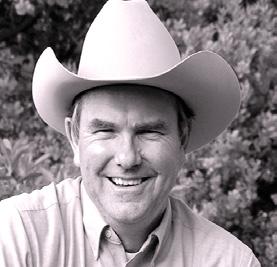
NEWSPAPER PRIORITY HANDLING
Riding Herd
October 15, 2022 • www.aaalivestock.com Volume 64 • No. 10 LEE PITTS
Most of the stuff people worry about ain’t never gonna happen anyway.
Saying things that need to be said.
continued on page 3 continued on
2
continued on page 4continued on page 4
For advertising, subscription and editorial inquiries write or call:


Livestock Market Digest P.O. Box 7458 Albuquerque, N.M. 87194 Telephone: 505-243-9515 Fax: 505-349-3060 www.aaalivestock.com
EDITORIAL and ADVERTISING STAFF
CAREN COWAN Publisher
LEE PITTS Executive Editor CHUCK STOCKS Publisher Emeritus RANDY SUMMERS Sales
FALL MARKETING EDITION AD SALES RANDY SUMMERS, 505-850-8544 email: rjsauctioneer@aol.com
FIELD EDITOR DELVIN HELDERMON, 580/622-5754 1094 Koller Rd, Sulpher, OK
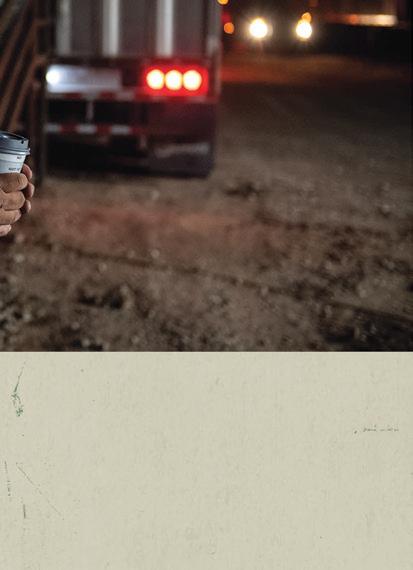
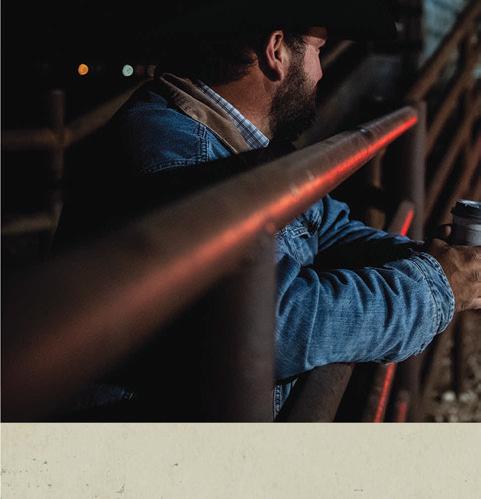
ADMINISTRATIVE and PRODUCTION STAFF
JESSICA DECKER Special Assistance KRISTY HINDS Graphic Designer
to the World Trade Orga nization-enforced national trea
obligations.”
Did you know Congress has been extending a $7,500 tax credit for every Made-in-China electric car imported into the United States? I sure didn’t. But no more. Says R CALF, “The Inflation Reduction Act pro vides the $7,500 tax credit only for electric cars that meet cer tain origin conditions, including final assembly in North Ameri ca. This effectively ends a signif icant subsidy enjoyed by electric car manufacturers under the jurisdiction of the Communist Party of China.”
According to R CALF CEO, Bill Bullard, “Congress has purposefully signaled it will no longer blindly adhere to out dated international trade rules when such rules run counter to the best interests of the Unit ed States. And Congress’ new direction should pave the way for enactment of the American Beef Labeling Act that requires mandatory country of origin la beling (mCOOL) for beef.”
Any cowboy with his or her permanent teeth will recall that we once had mandatory coun try of origin labeling for beef in this country and during the years it was in place we had the most profitable years for the cow-calf producer of any period during this writer’s lifetime. As R CALF reminds us, “The 2002 and 2008 Farm Bills required mandatory country of origin labeling for beef being sold in the United States. However, Congress repealed the manda tory country of origin labeling law for beef in 2015 when the WTO previously ruled the Unit ed States was violating its trade obligation when mCOOL for beef was first implemented in 2009. In response to that ruling, Congress repealed mCOOL for beef in 2015.”
But that was long ago and worlds away.
A Window of Opportunity


In the coming days and months, you will be hearing more about the American Beef Labeling Act. It is a proposed piece of legislation that would reinstate mandatory country of origin labeling on beef being sold in the United States and would ensure that only beef born, raised, and harvested in the U.S. could legally have a “Product of U.S.A.” sticker on the package.
Bullard says the American Beef Labeling Act, “embodies the same boldness for achiev ing the best interests of United States cattle farmers and ranch ers and consumers as Congress has now accorded to the do mestic supply chain for electric cars.”
The American Beef Label ing Act is a bipartisan bill in troduced in the U.S. Senate in 2021 by Senators John Thune (R-SD), Jon Tester (D-MT), Mike Rounds (R-SD), and Cory Booker (D-NJ). Despite having attracted additional bipartisan cosponsors the bill has lan guished without action in the U.S. Senate agriculture com mittee.
In March 2022, a bipartisan companion bill was introduced in the U.S. House by Repre sentatives Lance Gooden (RTX) and Ro Khanna (D-CA). The American Beef Labeling Act reverses Congress’ repeal of mCOOL for beef by requir
ing beef to be reinstated among the various other foods current ly subject to the U.S. mCOOL law, including fruits and vege tables, fish, chicken, and lamb. Those items, by the way, never lost their mCOOL protection.
Say Thune and Tester, “We’ve found that the adverse mCOOL ruling by the WTO nearly a de cade ago remains the greatest obstacle to broad congressional support for mCOOL for beef, even though this common-sense measure has broad public sup port.”
So at a time when our con nection with the WTO seems weaker than it’s ever been, we may have been given a window of opportunity in which to get mCOOL reinstated as the law of the land. It may be a matter of now or never.

While Thune and Tester may be from different political par ties, “We share the strong view that the highest quality beef in the world is raised right here in the United States. We also agree that the beef labeling system in our country needs to change.
Currently, imported beef that is neither born nor raised in the United States, but simply fin ished here, is allowed to be la beled as ‘Product of the U.S.A.’ The ground beef you picked up from the grocery store to fire up on the grill this weekend during the game could have originally come from a country half way around the world, but just be cause it was packaged here in the United States, there could still be a misleading label on it. At that point, the only thing that’s potentially made in the U.S.A. is the packaging it’s wrapped in — if that.”
Thune and Tester explained in a joint letter that first ap peared on Agri-Pulse.com, “Our American Beef Labeling Act would require the U.S. trade representative, in consul tation with the U.S. Secretary of Agriculture, to develop a WTO-compliant means of rein stating mCOOL for beef. Spe cifically, our bill would give the USTR six months to develop a reinstatement plan followed by a six-month window to imple ment it. If the USTR fails to re instate mCOOL for beef within one year of enactment, it would automatically be reinstated. That would ensure when you see a ‘Product of the U.S.A’ label on your beef, you can trust it.”
“Our legislation currently has eight cosponsors in the Senate, and a bipartisan companion bill has also been introduced in the U.S. House of Representa tives. We will continue working to build support from our col leagues to advance this import ant legislation because having transparency in labeling that benefits producers and consum ers alike is just common sense.”
Says R CALF’s Bullard, “We fully expect the bold action tak en in the Inflation Reduction Act, which reflects an acknowl edgement that WTO trade rules are now outdated and in adequate, will further empow er Congress to begin serving America’s interests by enacting mCOOL for beef, which will most assuredly help strengthen America’s domestic protein sup ply chain.”
And The Poll Says...
Besides sending a signal that America will no longer go along with global, one world groups that often are diametri cally opposed to our laws and belief systems there’s another,

Page 2 Livestock Market Digest October 15, 2022
Livestock Market Digest (1SSN 0024-5208) (USPS NO. 712320) is published monthly except semi-monthly in September in Albuquerque, N.M. 87104 by Livestock Market Digest, Inc. Periodicals Postage Paid at Albuquerque, N.M. POSTMASTER Send change of address to: Livestock Market Digest, P.O. Box 7458, Albuquerque, N.M. 87194 Subscribe Today NAME ADDRESS CITY STATE ZIP — MY CHECK IS ENCLOSED FOR — One Year: $25 Two Years: $35 Single copy: $10 Clip & mail to: Livestock Market Digest, P.O. Box 7458, Albuquerque, N.M. 87194 Farm Credit of New Mexico has been farmer and rancher owned for more than a century. Year in and year out, we’ve provided financial services to family-owned businesses of all sizes, helping them grow and prosper. That’s the di erence between being a bank and being customer owned. What can we do for you?
You
only
work the day shift. Of course, there’s
24 hours
in a day.
farmcreditnm.com | 1-800-451-5997 ence
ty
NOW OR NEVER from pg. 1
overwhelmingly majority of American consum ers want it.
According to a poll conduct ed by Morning Consult on be half of the Coalition for a Pros perous America, 86 percent of American voters support the American Beef Labeling Act that reinstates mandatory coun try of origin labeling for beef.
According to the poll....
■ 90 percent of voters are concerned that foreign importers of beef can le gally put a “Product of U.S.A.” sticker on a pack age containing beef that was born, raised, and har vested outside the United States.
■ 89 percent of voters are concerned that foreign importers of beef can legally put a U.S. food safety inspection sticker on a package containing beef that was born, raised, and harvested outside the United States.
■ 77 percent of voters be lieve it’s important that the beef they purchase was born, raised, and harvested in the United States.
■ An overwhelming majori ty of voters—including 86 percent of Democrats, 83 percent of Independents, and 90 percent of Repub licans—support the Amer ican Beef Labeling Act.
■ The poll further reveals that registered voters from all regions within the U.S. overwhelmingly support the American Beef La beling Act – 82 percent of Northeast voters, 90 per cent of Midwest voters, 87 percent of voters in the South, and 84 percent of voters in the West.
“We hope lawmakers,” says Bullard, “will carefully review this poll and quickly join this legislation as cosponsors to en sure its swift enactment.”
Talk About Hypocrites!
An interesting side story is that while all this mCOOL talk is resurfacing, R CALF is taking another case to the Supreme Court against suing the USDA, its subagency, the Animal and Plant Health Inspection Ser vice, and the heads of those agencies. They are taking them to the Supreme Court over the government’s effort to phase out the use of metal eartags, brands, backtags, and similar low-cost means of identifying livestock and replacing them with man datory radio frequency identifi cation (RFID) eartags to trace livestock.
So at the same time the Big Four packers and their pack er-backers at the NCBA are saying that we don’t need our beef identified as to country of origin, they are fighting tooth and nail to get the implemen tation of mandatory labeling of all beef animals in this country. They want your cattle identified with an RFID chip in their ear but when it comes to properly identifying the beef they pro duce... NOOOOO!
RFID traceability would al low the USDA and any other federal agency (including the IRS) to know exactly how many cattle you own and when you sell them. It would also make the “cow tax,” for any climate change caused by cows, much
more doable by the bureau crats. Such a measure would also mean that many small cat tle producers would either be forced out of the cattle business or leave simply because they couldn’t afford the cost of com pliance.
How, on the one hand can the NCBA and the Big Four say we don’t need our beef identi fied but they demand that you put a radio ear chip in every beef animal you own?
Talk about hypocrites!
There may be something else in the recent poll that might prompt lawmakers to get off their collective duffs and final ly vote to reinstate mCOOL.
According to the poll an over whelming majority of voters (74 percent) say they would be more likely to vote for a U.S. Senate or U.S. House candidate who supports the American Beef La beling Act. Nearly three-quar ters of Democrats (72 percent) and four in five Republicans (79 percent) say they are more likely to vote for a candidate who sup ports the Act.
Sadly, those are the only kind of numbers that persuade politi cians these days.
PREY FOR ME
vault and made me feel like a real businessman and as a result I banked with the bank Jim was employed by for 40 years until they were swal lowed up by a huge bank that didn’t have any Jims working for them.
My next experience with a banker was not so great. My wife and I had an agreement to borrow $100,000 to build our dream home on a great piece of real estate we used as collateral. But when it came time for the bank to give us the first one-third of the money the predatory banker informed us that there might be a problem with the loan. To make a long story short, we finally got the money, paid off the entire loan within three years and have not bor rowed money from a banker ever since!
My mom dealt with banks every day because she worked for the FDIC after my folks divorced. Her job was to trav el all over the country shut ting down banks that had gone belly up. As a result, I
1
have a fabulous collection of bank bags from bankrupt banks. My mom’s job was to get rid of all the loans on the books of the broke banks and in thousands of cases this meant telling good loyal bank customers that they’d have to either pay off their loan or find alternative financing. Immediately! This turned my mom into the most menacing predator in the country.
One day at a bank in western Colorado a rancher looked at my mom’s name badge and said, “Pitts, huh. You wouldn’t by chance be related to that guy who writes for the newspaper?”

She replied proudly, “Yes, he’s my son.”
Prior to my mom’s admis sion I had several newspapers and magazines in the area who used my column but within three months I had none. Zero! Zip! Nada! I told my mom, “You have to quit telling people you’re related to me. It’s killing my busi ness!”
So, in the future if you
can’t find my column you’ll know I was a victim of my deceased mom, the predator, who made “Pitts” a bad name from coast to coast.
October 15, 2022 Livestock Market Digest Page 3
www.LeePittsbooks.com ▫
continued from page
and far better reason to reenact mCOOL...An
▫
eas of suitable habitat in that region,” he told Capitol Media Services. And he said the “best available science” shows there are some areas north of I-40 that should be open to wolves.
Bishop also said the agency’s rules “allow for too much take and killing of Mexican wolves in the wild.”
So now Bishop, on behalf of the Grand Canyon Wolf Recovery Project and other groups, wants a judge to order the federal agency to go back and revisit its plans — and do so in compliance with the En dangered Species Act and the National Environmental Policy Act.
If the claims sound familiar, they should.
U.S. District Court Judge Jennifer Zipps ruled more than four years ago that the agency ignored the advice of “leading wolf scientists” in adopting its own recovery plan. And the judge said Fish and Wildlife of ficials acted in an “arbitrary and capricious” manner in deciding what to do.
However, the only thing the judge could do is order the agency to redo its plans.
But Bishop said those revi sions still fall short of what the law requires — and what the scientists said is necessary to have a viable wolf population. And he said at least part of that is political.
“I don’t mean like Republi can or Democrat,” Bishop said.
“A lot of people just don’t want to see wolves on the
land,” he said, at least not in the amounts and in the ar eas where they could thrive. “They’d rather see a single, smaller population in more iso lated areas.”
But that, said Bishop, is not a factor that FWS can take into consideration.
“The law requires them to find the best available science in terms of what’s best for wolves and conservation,” he said.
There was no immediate re sponse from the agency.
What happened is, sever al individual Mexican wolves were captured in Mexico, be coming the basis of a captive breeding program overseen by FWS. And Bishop said all Mex ican wolves in existence today are derived from seven individ uals.
All that led to the plan to establish an experimental pop ulation in Arizona and New Mexico — but only south of Interstate 40. And the agency rule said it would “promptly capture” Mexican wolves that leave the area and either “re lease it within the recovery area, put it into the captive popula tion, or carry out any other management measure.”
By 2015, there were 75 Mex ican wolves in the wild through the reintroduction program. There are now about 200.
But Bishop said that the agency rules and restrictions on where wolves are allowed still don’t guarantee the survival in the wild. And that is under lined, he said, by the agency’s declaration that those animals
are “not essential.”
“The FWS said if the entire experimental population in the wild died, it would not appre ciably reduce the prospects for future survival of the subspe cies in the wild because cap tive populations could produce more surplus wolves for rein troduction,” he told the judge.
Bishop said the 2018 court ruling against the agency changed little, with Fish and Wildlife maintaining the same population area as before, in cluding the I-40 northern boundary.
The lawsuit seeks reversal of the agency’s “not essential” designation with the limits it proposes.
“The best available science reveals the experimental popu lation of roughly 200 Mexican wolves in the wild in the Unit ed States are essential to the continued existence of Mexi can wolves in the wild,” Bishop wrote. He said that number would have the genetic varia tion that, if lost, would “appre ciably reduce” the survival of the subspecies.
And Bishop said the captive breeding program is unable to replace the 200 wolves in the wild, saying the breeding pop ulation “is aging and has lost much of its genetic diversity.”
Other plaintiffs in the law suit include WildEarth Guard ians, Western Watersheds Proj ect, Wildlands Network and the New Mexico Wilderness Association.
USDA continued from page 1 of the Mexican Wolf Program will make it almost impossi ble for the Arizona Depart ment of Agriculture to meet our statutory mandate to pro tect the livestock operators in this state,” wrote Arizona Department of Agriculture Director Mark Killian in a let ter to Keith Wehner, Direc tor, Western Region APHIS Wildlife Services.
“Your proposed New Stan dards disregard the concerns of ranchers who are already waiting on depredation pay ments and will raise the standard of proof to an im possibly high level. There is evidence that you are already following your New Stan dards without due process for livestock owners,” wrote the New Mexico Cattle Growers’ Association and the Arizona Cattle Growers’ Association in a joint letter.


Nelson Shirley, a rancher living with wolves, said “The U.S. Fish & Wildlife Service (FWS) action taken earlier this year to remove the pop ulation cap on wolves means that wolf density will increase dramatically in Arizona and New Mexico. The WS deci sion this summer to change the evidence standards means that there can be few if any findings of confirmed or even probable wolf dep redations on livestock.
Bill Aims to Help Ranchers Recover Losses to Wolves
BY JESSIE ROGERS SPECIAL TO THE COPPER ERA
will be relieved of responsi bility to remove wolves that repeatedly kill our livestock. These actions will make ranching unsustainable here in the Southwest.”
Wehner told ranchers, who heard that changes in the ev idence standards were being made and who pressed the is sue, that they had to provide comments by September 23. Regardless, given that there was no published notice of a comment period, comments from interested parties should be sent immediately to Weh ner as well as other USDA of ficials involved, including but not limited to Janet Bucknall, WS Deputy Administrator; Wendy Anderson, WS Assis tant Program Manager; and Jennifer Moffitt, Secretary for Marketing & Regulatory Programs.
Here are email addresses for these agents:
Mr. Keith Wehner, keith.p.wehner@usda.gov
Janet Bucknall, janet.l. bucknall@usda.gov
Wendy Anderson, Wendy. Anderson@usda.gov
Eric Steuber, Eric.Steu ber@usda.gov
David Bergman, Da vid.L.Bergman@usda.gov
Jon Grant, Jon.L.Grant@ usda.gov
for eight years in order for the Mexican gray wolves to be re moved from the endangered species list.
H
ouse Resolution 8475 would re imburse ranch ers 100 percent of market value for livestock losses attributable to Mexican gray wolves.
Equality in economy and ecology is a continuing battle in eastern Arizona. Cattle ranch ers find themselves fighting for compensation for livestock loss due to wolf attacks, while wild life enthusiasts celebrate eco logical gain of increased wolf population.
Rancher Doug Stacy runs cattle on more than 8,000 acres in eastern Arizona, losing a cow to a wolf attack means los ing time and effort invested in that cow. He says it’s important to raise every calf just to stay afloat.
Congressman Tom O’Halle ran, a Democrat who currently represents Arizona’s District 1, and Congresswoman Yvette Herrell, a Republican who cur rently represents New Mexi co’s District 2, have introduced legislation to expand predator support programs for Arizona and New Mexico ranchers deal ing with livestock losses. The current programs reimburse a livestock loss at 75 percent of the market value. This new bill proposes 100 percent of market value reimbursement and an emergency relief program.
According to the Defenders of Wildlife, the population of Mexican gray wolves increased by 5.5 percent, raising the num ber to 196 in 2021. The recov ery plan calls for an average of 320 wolf population sustained

Federal reintroduction began in 1998 in Arizona and New Mexico with 11 wolves. In 2009 the population grew to 40. Now 196 wolves roam over 14,000 square miles in the mountains of eastern Arizona and New Mexico. They prey on elk, deer, javelina, small animals and live stock. The Arizona Game and Fish Department saw the high est number of wolf attacks in 2019. As the wolf population increases and drought in the re gion also increases they expect to see more wolves interacting with livestock.
Jim de Vos with Arizona Game and Fish said the new legislation would be an import ant contribution to balance the competing interest of the Mexi can wolf recovery.
“The funding that is avail able now is limited,” he said. “O’Halleran’s bill will increase
Page 4 Livestock Market Digest October 15, 2022
▫ SUE continued from page 1
FWS
▫
House Resolution 8475 would reimburse ranchers 100 percent of market value for livestock losses attributable to Mexican gray wolves.
make effective
to the livestock
It’s a step in the right
the department of
fish
its
The Arizona Livestock Loss Board was established in 2015 to compensate livestock oper ators for wolf depredation and administer the livestock com pensation fund. In 2021 the board paid 51 livestock loss claims.
The livestock compensation fund consists of federal monies, legislative appropriations from the state general fund, public and private grants, and private donations. The board reviews and approves compensation claims, and adjusts compensa tion amounts for depredations based on market value.
“A problem with compensa tion is finding the location of an animal that has been killed,” rancher Stacy said. “The loss has to be a confirmed wolf attack.”
Even with evidence of wolves in the area, the remains of the calf may not be found in time to prove it was killed by wolves.
When ranchers find an ani mal that has been attacked, they must call wildlife services to in vestigate. The investigator eval uates the attack and checks for certain criteria. If the attack is shown to be from a wolf, a claim is sent to the Livestock Loss Board for consideration.
“The current system requires ranchers to constantly be near their cow herds to identify the cattle killed by the wolf,” ranch er Ben Menges said. “In a state where more ranchers need 60 to 100 acres per cow this is an in credibly daunting task.”
The livestock loss board meets monthly to take action on the claims. If the claim is approved by the board it is then forwarded to the National Fish and Wildlife Foundation to re quest payment for reimburse ment to the rancher. This pro cess can take a month.
“HR 8475 bill uses data from a study done by a team led by George Frisvold from the Uni versity of Arizona in order to de termine what the dollar amount should be,” Menges said. “If the bill were to pass, it would be the first time in history ranch ers were fairly compensated for wolves being on their oper ations.”
“Ranchers have long believed that current reimbursement is not sufficient, and it is extreme ly hard to get the compensation. We welcome the attention to the issue,” Cattle Growers As sociation spokesman Jeff Eisen berg said.

He noted that the pay “may not cover the entire loss of in come over time but it is an im portant step forward.”
According to the Arizona Game and Fish Department’s quarterly reports, as of June 2021, there were nine con firmed livestock losses in Arizo na. This year reports are much higher, as of June 2022, there were 30 confirmed losses.
The Livestock Loss board also pays out federal grant mon ey to ranchers to take measures to prevent future loss such as installing electric fencing and fladry fencing. In 2019 the Range Rider program was es tablished to further prevention efforts. Range Riders are game and fish employees who assist in the management of wolf activi ties on the ground. These riders are skilled in deterring wolves and help to keep the animals
separated from livestock.
Killing a Mexican wolf is a violation of state law and the Federal Endangered Species Act and can result in criminal penalties of up to $50,000, and/ or not more than one year in jail, and/or a civil penalty of up to $25,000, AZGFD said.
More than $30 million has been spent on the wolf recov ery program since 1998. The vast majority is through federal funding and sources of funding. Government agencies working for the recovery include the Arizona Game and Fish De partment, New Mexico Depart ment of Game and Fish, USDA Forest Service, USDA-Animal and Plant Health Inspection Service, Wildlife Services, U.S. Fish and Wildlife Service, White Mountain Apache Tribe, Bu reau of Land Management and the U.S. National Park Service along with several non-govern ment agencies such as Defend
Clean
ers of Wildlife, Sierra Club and the Center for Biological Diver sity.
On average, Americans con sume over 200 pounds of meat a year. Farmbase.com esti mates the beef from one cow is enough to feed a family of four for a year.
Arizona’s economy benefits from the ranching industry. Ac cording to the Arizona Cattle Growers Association, ranchers and the beef community con tribute $431 million to Arizo na’s gross domestic product.

At this time, the bill has been referred to the Subcommittee on Livestock and Foreign Agri culture. ▫

Advertise to Cattlemen and Ranchers!
October 15, 2022 Livestock Market Digest Page 5 300 acres or more relatively level, clean farm or pastureland with a large transmission line crossing? Lease Your Land for Solar Power Production Extraordinary income to the right property owner(s) If your property qualifies or your property along with neighbors qualify you may potentially receive long term income. (20 – 40-year lease) $800 - $1200 Per acre Per year with incremental increases CALL (828)-817-5400 or (828)-817-9101 Email Us at: InnovativeSolarFarms@gmail.com Visit our website at innovativesolarsystemsllc.com to view recent projects Please Note the Four Essential Requirements Below Do You Have Power Lines Like This On Or Adjacent To Your Land? • Can Not be Subtranssmision Lines • Must be Transmission Power Lines • Must be 115 Kv to 345 Kv Do You or You and Your Neighbor Have 300+ Acres of Transmission lines crossing or within 200 yards of property State or county maintained road bordering the property No timberland or clear cuts 300 or more acres (must be in recent cultivation or in pasture or clear open range)
Farm or Pasture Land? Lease Us Your Land! the balance and
compensation
owners.
direction and
game and
supports
pass ing.”
Call 505-243-9515 for more information
It’s Time to Rein in Government Agencies with Political Agendas
BY JAMES OLIVER
By now, many of you have heard about the Securities and Exchange Com mission’s plan to require public ly traded companies to disclose their greenhouse gas emissions.
The proposed rule, issued ear lier this year, requires these companies to disclose not only direct and energy-related emis sions, but also those of every downstream supplier, known as Scope 3 Emissions.
As you might imagine, this presents significant concerns for cattle producers who find themselves in the supply chain of many publicly traded compa nies, restaurants and retailers.

The federal government has already acknowledged collecting the data will be nearly impossi ble. There is also no agreed-up on scientific method for mea suring agricultural greenhouse gas emissions, particularly from livestock in a pasture.
Texas & Southwestern Cattle Raisers Association and many other agricultural organizations raised an army of opposition to the proposed rule during the commission’s comment period. Although not yet finalized, the agency is continuing to advance its proposal to regulate green house gas emissions.
The SEC’s actions highlight a growing and troubling trend — federal agencies actively work ing to achieve political agendas.
Activists and politicians are increasingly using the power of executive orders and admin istrative rulemaking to bypass the legislative branch and create regulations that would not pass Congress.
It’s easy to understand the reasoning, especially since nav igating Congress is so challeng ing today. Unfortunately, the officials who lead these govern ment agencies are appointed, not elected. By circumventing our elected representatives in Washington, D.C., they also circumvent the citizens who elected them.
Fortunately, the U.S. Su preme Court and many legisla tors are growing tired of these tactics.
This summer, the Supreme Court struck back at the Envi ronmental Protection Agency for overstepping its rulemak ing authority, emphasizing that “administrative agencies must be able to point to ‘clear con gressional authorization’ when they claim the power to make decisions of vast ‘economic and political significance.’”
Congress is also fighting back.
In the case of the SEC’s greenhouse gas reporting plan, several bills have been filed to expressly limit the commission’s authority to implement such re porting requirements.
One of the latest bills, the Scope 3 Act filed by Texas Con gressman Troy Nehls, has broad bipartisan support. Co-sponsors from Texas include Reps. Henry Cuellar, D-Laredo; Jake Ellzey, R-Midlothian; Vicente Gonza lez, D-McAllen; Ronny Jack son, R-Amarillo; Pete Sessions, R-Waco; Randy Weber, R-Alvin; and Roger Williams, R-Austin.
Despite the growing head winds, the current administra tion and agency officials show few signs of abandoning their current efforts. The SEC con tinues to march forward with its reporting requirements, and a wide range of proposed rules at other agencies continue to advance, as well.
Texas & Southwestern Cattle Raisers Association will contin ue to fight the burdensome and unrealistic regulations cropping up at government agencies, but Congressional action will also be critical.
As you head to the polls this November, please make sure
you know where the candidates stand on these regulatory issues. More importantly, though, con sider their stance on the ability of regulatory agencies to pursue political agendas without the “clear congressional approval” noted by the Supreme Court.
The decisions we make this November will have lasting im plications on our ability to con tinue raising cattle and caring for our land.
James Oliver serves on the Texas & South western Cattle Raisers Association board of directors and chairs the natural resources and wildlife committee.
Cattlemen Praise Bill Shielding U.S. Farmers & Ranchers from Proposed SEC Rule
More than 100 members of the U.S. House of Representatives introduced legislation that would shield agricultural producers from a climate disclosure rule proposed earlier this year by the Securities Exchange Commission.
The “Protect Americas Farmers from the SEC Act” prohib its the SEC from requiring an issuer of securities to disclose greenhouse gas emissions from upstream and downstream ac tivities in the issuer’s value chain arising from a farm.
The SEC’s proposed rule issued earlier this year stated that registrants would be required to disclose information about its direct and indirect greenhouse gas emissions and “climate-re lated risks.” The U.S. Cattlemen’s Association (USCA) sub mitted public comments in June opposing the rule.
USCA President Brooke Miller issued the following state ment:
“U.S. farmers and ranchers absolutely need this exemption from the Securities Exchange Commission’s climate disclosure proposal.
“Our producer members already face nearly insurmount able proposed and ongoing regulatory burdens from an array of federal agencies. Their main job should be putting American beef on American plates, not managing the complex clerical duties of SEC compliance rules.
“USCA appreciates Rep. Frank Lucas of Oklahoma for his leadership on introducing this important legislation.”
Alt-Meat Exec Charged With Assault
BY MELISSA SUE SORRELLS / MEATINGPLACE.COM
D
oug Ramsey, COO of Beyond Meat, was arrest ed on charges of “terroristic threatening” and third-degree battery, court re cords show, following allega tions that he attacked another man during an altercation in a parking garage after a college football game in Fayetteville, Arkansas, on September 17.
The company said that Ram sey had been suspended from his position. A senior vice presi dent will assume his duties on a temporary basis.
Ramsey was allegedly waiting
to exit Stadium Drive Parking Garage near Razorback Stadi um following Arkansas’ victory over Missouri State when a Sub aru made contact with the front passenger-side tire of his Bron co, according to a local media report.
Ramsey got out of his car and “punched through the back windshield of the Subaru,” ac cording to the report. When the Subaru owner exited his own car, Ramsey allegedly started punching the owner of the car and also “bit the owner’s nose, ripping the flesh on the tip.” He also “threatened to kill” the oth er man, according to the report.
Ramsey was arrested at 10:27 p.m. and taken into custody at
the Washington County jail. He was released the next morning on an $11,085 bond, and he is due in Fayetteville District Court on October 19.
Ramsey was hired by Be yond Meat in December 2021, charged with helping expand Beyond’s operations, supply chain and manufacturing and developing efficiencies. Beyond did not immediately reply to Alt-Meat’s request for com ment.
Prior to joining Beyond, Ramsey had worked at Tyson Foods since 1992, where he held several executive titles, including president of global McDonald’s business. A Tyson spokesperson told Arkansas’ KNWA Fox 24 that Ramsey left the company last year on his own accord.
Page 6 Livestock Market Digest October 15, 2022
▫
▫
▫
ESTATE
■ PRICE REDUCED! CEDARVALE, NM – 7,113acre ranch (5,152 ac. +/- Deeded – 1,961 ac.
State Lease) well fenced & watered w/good pens, new barn.

■ COLFAX COUNTY NM GETAWAY – 1,482.90 ac.+/- grassland (1,193.59 ac. +/- Deeded, 289.31 ac. State Lease), great location near all types of mountain recreation.
■ PRICE REDUCED! UNION CO., NM – 2,091.72 ac. (1,771.72 Deeded, 320 ac. -/+ State Lease), well watered w/three wells, two sets of steel pens.



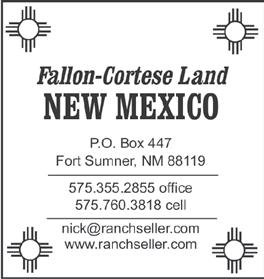
■ ANGUS, NM – 250 +/- acres with over a 1/2 mile of NM 48 frontage. Elevations from 6,800 to 7,200 feet. Two springs along a creek. Ideal for future development or build your own getaway home.
■ H IDDEN GEM – 941 acres +/- in Randall Co. NW of Canyon, Tx. STUNNING VIEWS OVER LOOKING PALO DURO CREEK. Turn key cow/calf operation w development potential. Property includes: 3/3/3 ranch style home, 4 wells, large shop plus shed, enclosed livestock working facility w/hydraulic chute, livestock pens & shed, miles of 5 & 6 barbed wire fence & over 7000' of pipe fence. YOU WILL NOT WANT TO MISS THIS! Canyon School District.
■ DEAF SMITH CO., TX. – 651 ac. +/-, 7 miles N of Dawn, TX, 1 mile E of FM 809. 349 acres native grass with well-maintained fencing and 302 acres of cultivated dry land.

■ DALLAM CO, TX – 1,216.63 ac. +/- of CRP/ ranchland w/irrigation, re-development potential, wells & pipelines already in place.

-
of
Co.,
w/stateremodeled
very good on pvmt.
heavily livestock
on
Lincoln
meadow

a

on Mexico, adjoins
POTENTIAL
Special,
w/water & a beautiful 3 bathrooms, metal shop.
&
BottariRealty
Vista
LAND LOANS

TEXAS & OKLA. FARMS & RANCHES
198 AC Fanninco, TX
Good Country Rd. Frontage, Rural Water, Electricity, 35 mi NE of Dallas, SO of Bonnam $20,000 Per Acre
270 AC Miticelle Co., TX 1 mi off I-20, 6 Elect, Trurans Rock Formation Irrigation Well and Sprinkler. All Bring Case, Modest Home & Barns Price $2.2 million
270 AC Pine Timber & Hunting, Anderson Co., TX Co. Rd. Frontage, Small Lakes $7,250 Per Acre
Joe Priest Real Estate
TEXAS & OKLA. FARMS & RANCHES
■ CASTRO CO., TX – Drip irrigated farms with cash leases available. 2,080 acres (will divide); 1,715 acres; 640 acres; 320 acres.
■ CASTRO CO., TX. – Sprinkle irrigated farms with ½ mile pivots. 656 acres; 640 acres; 320 acres; Cash leases available.


■ CASTRO CO., TX – 661 acres, ½-mile pivot, 4 wells, 3 miles NW of Hart.


■ PRICE REDUCED! LET’S LOOK at these two choices 80-acre tracts of dryland located in close proximity one to the other in Wilbarger County near Vernon, Texas.
PRICE REDUCTION! TURN-KEY RESTAURANT
READY FOR BUSINESS!
of
out of Amarillo & Canyon
Umbarger, TX., state-of-the-art bldg., w/complete
LAND 740 ± Acres of unimproved native grassland
Mile Hill area with frontage along U.S. Highway 70/380. This
four miles west of Roswell in the
is fenced on
COWBOY DRAW RANCH
Priest Real
and
acres of additional land that may be purchased.
per acre.
larger
had good summer rains with no cattle
that has been owned and operated
terrain
in excellent condition. Call for a brochure and come take a look. Price: $1,350,000
southeast of Corona, NM in Lincoln
Lease Acres and 2,240 NM State


Water provided by five wells and corrals. The ranch had a good summer for a brochure or view on my website.
limits of Roswell, NM. Six total acres
Scott McNally, Qualifying Broker



M Real Estate, LLC

Roswell,
with a 2, 200 square foot residence, room and loafing shed.
$400,000
October 15, 2022 Livestock Market Digest Page 7 REAL ESTATE GUIDE Livestock Market Digest Page 7 CHICO CREEK RANCH, Colfax County, NM. NEW LISTING. 6,404.26 +/- Total Acres, Located approximately 10 miles east of Springer New Mexico. 3,692.60 +/- deeded acres with balance in state lease. Excellent grass and water. Two plus miles of the Chico Creek meandering through the center of the property. Additional wells and dirt tanks. Nice historic head quarters pri vately located with shade trees and excellent views of the prop erty. Shipping pens in central portion of property. $2,837,318 WAGON MOUND RANCH, Mora/Harding Counties, NM. 8,880.80 +/- Total Acres, a substantial holding with good mix of O’NEILL LAND, llc P.O. Box 145, Cimarron, NM 87714 • 575/376-2341 • Fax: 575/376-2347 land@swranches.com • www.swranches.com CIMARRON ON THE RIVER, Colfax County, NM. 7.338 +/deeded acres with 4.040 acre-feet per annum out of the Maxwell-Clutton Ditch. Custom country-chic 2,094 +/- sq ft home. Owns both sides of river in places. Horse/cow/chicken/ vegetable garden/greenhouse/orchard set up. Country living at it’s finest, in town, but in a world of your own. Very special on river. Appointment only. $650,000. RATON MILLION DOLLAR VIEW, Colfax County, NM. 97.68 +/- deeded acres in 2 parcels with excellent home, big shop, wildlife, a true million dollar view at the end of a private alty er 40 ms erTY y.com SOCORRO PLAZA REALTY On the Plaza Donald Brown Qualifying Broker 505-507-2915 cell 505-838-0095 fax 116 Plaza PO Box 1903 Socorro, NM 87801 www.socorroplazarealty.com dbrown@socorroplazarealty.com COLETTA RAY Pioneer Realty 1304 Pile Street, Clovis, NM 88101 575-799-9600 Direct 575.935.9680 Office 575.935.9680 Fax coletta@plateautel.net www.clovisrealestatesales.com Selling residential, farm,ranch, commercial and relocating properties. AG
As Low As 4.5% OPWKCAP 2.9% INTEREST RATES AS LOW AS 4.5% Payments Scheduled on 25 Years AG L AND LOANS As Low As 3% OPWKCAP 2 9% INTEREST RAT ES A S L OW A S 3% Pay m en t s Sc h ed u l e d o n 25 Year s J o e St u b b l ef i e d & A s s o c at e s 13 830 Wes t e r n St A m ar i o TX 806 /62 2 34 82 c e 8 06 /67 4 20 62 joes3@suddenlink net M c h ae l Per e z A s s o c i a t es 521 West Second St • Porta es, NM 88130 575 226 0671 or 575 226 0672 fax Buena Vista Realty Qualifying Broker: A H (Jack) Merr ck 575 760 7521 www buenavista nm com NORTHERN CALIFORNIA RANCH PROPERTY 31 years in the ranch business - see www.ranch-lands.com for videos & brochures BILL WRIGHT, SHASTA LAND SERVICES, INC. 530-941-8100 • DRE# 00963490 • www.ranch-lands.com DUANE & DIXIE McGARVA RANCH: approx. 985 acres Likely, CA. with about 600+ acre gravity flood irrigated pastures PLUS private 542 AU BLM permit. About 425 acres so of the irrigated are level to flood excellent pastures with balance good flood irrigated pastures. NO PUMPING COST! Dryland is perfect for expansion to pivot irrigated alfalfa if desired. Plus BLM permit for 540 AU is fenced into 4 fields on about 18,000 acres only 7 miles away. REDUCED ASKING PRICE - $3,125,000 BEAVER CREEK RANCH: about 82,000 acres - with 2,700 deeded acres plus contiguous USFS & BLM permits for 450 pair; 580+- acres irrigated alfalfa, pasture, and meadow from Beaver Creek water rights and one irrigation well. 3 homes, 2 hay barns, 4 feedlots each w/ 250 ton barns, 2 large reservoirs, can run up to 500-600 cows YEAR ROUND. REDUCED ASKING PRICE - $5,400,000 BEAR CREEK RANCH: Approx. 1,278 acres winter range ground and recreational property. Located on Bear Creek and accessed from South Cow Creek Valley Road. Should be great hunting for deer, wild turkey, wild pigs, quail & owner states good trout fishing in Bear Creek. Deeded access easement thru neighbor ranches. No improvements & very private inside the ranch. Now only $700 per acre - $894,600 • 83 acre wood home with barns, meadows and woods. Fronts State Rd. $545,000 • 160 acre Ranger Eastland Co, $560,000 • 270 acre Mitchell County, Texas ranch. Investors dream; excellent cash flow. Rock formation being crushed and sold; wind turbans, • 840 Immaculate, Hunt Co, TX. Ranch. Pastures, 40 tanks, and lakes. Beautiful home, barns, and other improvements. Some minerals, game galore. All for $1.35 million.
Joe
Estate 1-800/671-4548 joepriestre.net • joepriestre@earthlink.com ranch
miles
BLM
AUYL.
city
Improved
Price:
UNDER CONTRACT listing agent 575-825-1291 www.buenavista-nm.com
GUIDE Dimmitt, TX 79027 Scott
Broker Qualifying Broker 5:00am/10:00pm www.scottlandcompany.com OR SMALL! Guadalupe Co., deeded & 519 ranch on both flow daily) Sumner; wildlife, buyer looking New Mexico 980 ac. +/past, land lays side
Hwy. 54. Union
NM –grassland
in
+/-
w/ fences etc., on the front gate. scenic ac. +/-
by
in Pines
covered
Penasco. This build
legacy ac. irr.,
Potential.
Texline
+/-
AG LAND LOANS As Low As 3.5% OPWKCAP 3.5% INTEREST RATES AS LOW AS 3.5% Payments Scheduled on 25 Years Joe Stubblefield & Associates 13830 Western St., Amarillo, TX 806/622-3482 • cell 806/674-2062 joes3@suddenlink.net Michael Perez Associates Nara Visa, NM • 575-403-7970 SCOTT MCNALLY www ranchesnm com 575/622 5867 575/420 1237 Ranch Sales & Appraisals Ba r RealM Es t a te MAJOR PRICE REDUCTION – CALL PAUL FOR DETAILS 10 Acres of commercial property, incredible highway visibility and access from either east or west directions on Hwy 60, 3 miles East of Garden Inn Truck Plaza and 4 miles west of Willow Springs. Natural gas may be available on site. LOCATION PLUS! This property is well suited for many types of businesses (Restaurant, Retail, Motel, Business of any kind!) A MUST SEE PROPERTY. MLS#11402703 See all my listings at: paulmcgilliard.murney.com Paul McGilliard, Broker Associate Residential / Farms/Ranches / Commercial 417-839-5096 or 800-743-0336 521 West Second St • Portales, NM 88130 521 West Second St Portales, NM 88130 575 226 0671 or 575 226 0672 fax Buena Vista Realty Qualifying Broker: A H (Jack) Merrick 575 760 7521 www buenavista nm com O’NEILL LAND, llc P.O. Box 145, Cimarron, NM 87714 • 575/376-2341 • Fax: 575/376-2347 land@swranches.com • www.swranches.com CAPULIN -SIERRA GRAND VIEW, Union County. NM. 520 +/- deeded acres with HQ 1.5 miles off highway, 3 bedroom 2 bathroom home with landscaped yard and volcanic rock walls, nice outbuildings, 3 registered wells including 1 registered as an irrigation well and an excellent solar well. Close proximity to Des Moines, NM. $898,000 EAGLE NEST ESCAPE, Colfax County NM. 78.42 +/- deeded acres overlooking Eagle Nest Lake, private pond, 3 bedroom 2 bathroom home, large shop garage able to store 2 big RV’s. Improvements almost half mile off highway. $825,000 MAXWELL 45, Excellent irrigated pasture with utilities in back of property, including installed septic system, with private views of mountains. 40 irrigable acres and a domestic water meter installed. Great to put down home and bring horses. $249,000 BAR LAZY 7 RANCH, Colfax County, Moreno Valley 594.38 +/- deeded acres, accessed off blacktop between Eagle Nest and Angel Fire. Historic headquarters. Currently used as summer grazing, pond and trees accessed off county road on rear of property as well. Presented “ASIS” New Survey, $4,000,000 $3,800,000 UTE PARK RIVER PLACE 6.83 +/ACRES, 450 +/- feet of the Cimarron River and more than that of Ute Creek are the south and east boundaries of this unique one of a kind water property. 2 bedroom 1 bathroom cabin, year round access off Hwy 64. $589,000 $570,000 CIMARRON BUSINESS, Frontage opportunity, house, big shop and office buildings, easy view off Hwy 64. Formerly known as “The Porch.” $295,000 MIAMI 40 ACRES, Colfax County NM, private 2 bedroom getaway with elevated fantastic view, nice porch, little casita, irri gation and pole barn. Extremely private setting. Right below mesa. $450,000 COLFAX TAVERN & DINER, Colfax County, NM. Aka “COLD BEER”, turn key legendry regional icon and destina tion, with anchor staff/team willing to stay on. Prime business on front range. $1,500,000 CONTRACT PENDING CONTRACT PENDING CONTRACT PENDING
+/-
-
One
the best steak houses in the nation just
at
facilities. www.scottlandcompany.com Ben G. Scott – Broker Krystal M. Nelson – NM QB 800-933-9698 5:00 a.m./10:00 p.m. RANCH & FARM REAL ESTATE We need listings on all types of ag properties large or small!
Bar
P.O. Box 428,
NM 88202 Office: 575-622-5867 Cell: 575-420-1237 Website: www.ranchesnm.com SOLD EIGHT MILE DRAW
located
Six
parcel
three sides
adjoins 120
Great investment. $600
Excellent small cattle ranch located in southeastern New Mexico approximately 50 miles northwest of Roswell on the Chaves/ Lincoln county line. 7,455 total acres with 2,600 deeded with the balance federal BLM lease acres. Permitted for 151 animal units yearlong with an additional 30 animal units on a temporary nonrenewable basis. Watered with two wells and several miles of water pipeline. Two
open draws run through the ranch that provide overflow areas to enhance grazing. The
is open and rolling with good turf. The ranch has
since last spring. The ranch is
COLETTA RAY Pioneer Realty 1304 Pile Street, Clovis, NM 88101 575-799-9600 Direct 575.935.9680 Office 575.935.9680 Fax coletta@plateautel.net www.clovisrealestatesales.com Selling residential, farm,ranch, commercial and relocating properties. Patronize Our Advertisers
1-800/671-4548 joepriestre.net • joepriestRE@gmail.com
521 West Second St • Portales, NM 88130 575 226 0671 or 575 226 0672 fax Buena Vista Realty Qualifying Broker: A H (Jack) Merrick 575 760 7521
Paul Bottari, Broker 775/752-3040 Nevada Farms & raNch PrOPerTY www.bottarirealty.com SOCORRO PLAZA REALTY On the Plaza Donald Brown Qualifying Broker 505-507-2915 505-838-0095 116 Plaza PO Box 1903 Socorro, NM www.socorroplazarealty.com dbrown@socorroplazarealty.com AGLANDLOANS AsLowAs3% OPWKCAP2.9% INTERESTRATESASLOWAS3% 521 West Second St. • Portales, NM 88130 575-226-0671 or 575-226-0672 fax Buena
Realty Qualifying Broker: A.H. (Jack) Merrick 575-760-7521 www.buenavista-nm.com or the listing agent 575-825-1291 A SOURCE FOR PROVEN SUPERIOR RED ANGUS GENETICS 14298 N. Atkins Rd., Lodi, CA 95240 209/727-3335 ELM HWY 99 SALE HEADQUARTERS STOCKTON HWY 4 TO SACRAMENTO FARMINGTON SALE MODESTO VALLEY J17 MARIPOSA RD Facility located 25525 East Tree Road, Escalon, CA# N ESCALON LIVESTOCK MARKET, INC. LIVESTOCK SALES 3 days per week on Monday, Wednesday, & Friday MONDAY: Beef Cattle FRIDAY: Small Animals WEDNESDAY: Dairy Cattle Poultry – Butcher Cows www.escalonlivestockmarket.com • escalonlivestockmarket@yahoo.com CONSIGNMENTS ME! C WELCO alloreforminformationononsignincg yourstock. MIGUEL A. MACHADO President Office: 209/838-7011 Mobile: 209/595-2014 JOE VIEIRA Representative Mobile: 209/531-4156 THOMAS BERT 209/605-3866 CJ BRANTLEY Field Representative 209/596-0139 Advertise to Cattlemen and Ranchers! Call 505-243-9515 for more information
Pasture Management & Water Distribution
A Tide That Raises All Ships
The desert of southeast Arizona can be a tough place to run a ranch. Pastures are big and some times rough and rocky, and cows have to hustle and rustle to make a living. Mesquite and other brush can dominate the landscape. Running cows in country like this means you have to work with the land, even when the land doesn’t want to work with you.
When the land doesn’t want to work with you is when good pasture management, and the right kind of supplement, can make the difference between weaning a good calf crop or not. That’s what Carter Williams, manager of the Cienega Ranch near Wilcox, Arizona, has learned.
“Cienega” translates to a seep, spring, or small water hole in the desert. And in a desert environment, water is the foundation of all life.
The original ranch is more than 100 years old and spread across a huge chunk of the state. Over time, the size diminished and the previous owners ran just a small portion of the original outfit. As the family retired, the present owner bought the land and set about rebuilding the ranch, Williams said. A big part of that rebuilding process, in addition to acquiring some of the ranchland that was part of the original operation, is pasture im provement.
Williams and his crew are accomplishing that by drilling wells and running miles upon miles of pipeline to provide water in parts of pastures where none was available before. And they’re building dams in the draws and arroyos that run from the moun tain country into the flats.
The Cienega Ranch is high, about 4,600 feet above sea level, and runs from love grass flats to rough mountain pastures. Sur prisingly, it has a 22-inch annual rainfall, thanks to the Monsoon season that runs from mid-July through September.
Cattle Market Reform Cannot Wait
BY US CATTLEMEN’S ASSOCIATION DIRECTOR, BRETT CROSBY
Ablog post published by the U.S. Chamber of Com merce on July 12, 2022, claimed that Congress is “rushing” to consider “aggressive legislation to regu late beef markets.”
Boy, if only that were true.
In February 2020, the U.S. Cattlemen’s Association (USCA) hosted its annual Cattle Producer’s Forum at the Public Auction Yards in Billings, Montana. It was there that a group of producers discussed the idea of reigniting a concept previously advanced by Senator Chuck Grassley of Iowa to improve the cash cattle market.
That concept was introduced by Iowa’s senior senator in 2002 as the Transparency for Independent Livestock Producers Act. It would require 25 percent of a packer’s daily kill to come as a result of purchases made on the daily, open market or spot market.
That was 20 years ago.
Since that time, we’ve seen a 75 percent decrease in the number of cattle feedlots – from 55,472 in 2002 to 13,379 in 2017 according to U.S. Census of Agriculture data. We’ve also lost approximately 1,200 cow-calf producers and backgrounders each year.
“Rushing” into legislation? While we continue to hem and haw over whether or not bold Congressional action is needed, indepen dent producers will exit the business.
From an outsider’s view, it can certainly seem like all this talk of consolidation and anticompetitive practices in the U.S. beef and cattle industries suddenly sprung up. But USCA and other stake holders have worked towards restoring leverage and true price dis covery in the cattle marketplace for decades. Congressional pas sage of the Cattle Price Discovery and Transparency Act and the Meat and Poultry Special Investigator Act represents a significant step toward achieving that goal.
In testimony to the U.S. Senate Committee on Agriculture, Nu trition, and Forestry, Dr. Stephen Koontz of Colorado State Uni versity observed that,
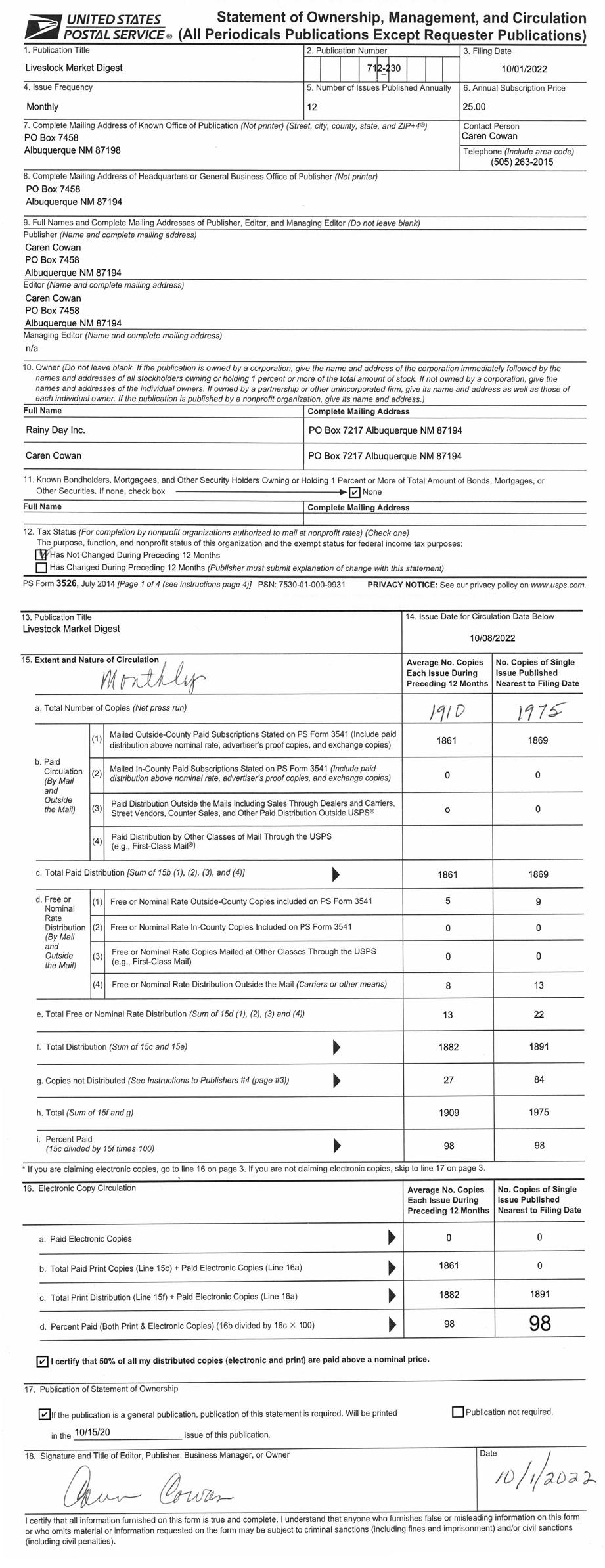
“There are no other industries outside of cattle and beef…that work in their entirety in this type of setting – whereby supply de cisions, demand revelation, and changing the product form are in distinctly different industries. Coordinating the system is difficult.”
“Difficult” is certainly understated, but the point remains: The U.S. cattle and beef industries’ marketing process and dynamics are entirely unique. In our business, we need a referee to ensure a competitive playing field free from interference. We also need a healthy and viable cash market to keep our independent producers in business.
Not many have accused Congress of moving too quickly. De mocracy is designed to be a slow, laborious process. Momentum for these two historic pieces of legislation grew over nearly two years from an idea conceived by a small group of from concerned produc ers to widespread support from producers and consumers, grass roots organizations, Members of Congress, and the White House. Now it’s time to finish what Senator Grassley began twenty years ago: Set aside the interests of multinational meatpackers and se cure the future of our sovereign food system.
the U.S. Cattlemen’s Association, repre senting Utah, Wyoming, and Colorado.
Page 8 Livestock Market Digest October 15, 2022
Brett Crosby currently serves as Region IV Director for
▫
Damming the draws not only provides surface water for the cattle during the dry winter months, but keeps more water on the land, Williams says, in stead of letting it run off and cause erosion. So the entire ecosystem—wildlife, plants, ev erything—benefits from the wa ter conservation efforts on the Cienega Ranch.
The ranch is home to around 900 cows that roam more than 60,000 acres.
When Williams took over ranch management the first year, the calves were already on the ground. “It was a 50 percent calf crop; no tubs, no supple ment whatsoever,” he said.
So Williams and his crew went to work. “The last three years I’ve been here I went from 80 percent to dang near 92 per cent calf crop.” Putting num bers to that statement, he said they branded 125 more calves in 2022 than the year before. And in 2021, they branded 50 more calves than in 2020.
He attributes that largely to having Riomax® tubs in front of the cows year around. “A lot of it is because these cows are staying in such good shape, es pecially through the winter and spring when it’s dry here,” he said. “June is one of the driest months down here in this coun
try. If you can get through June and hit the summer rain, you’re doing pretty good. But a lot of it’s because these tubs get them through the deal so their body scores are staying good and they’re cycling back when the bulls are hitting them.”
The cow herd is Angus based, with a few Red Angus and black baldies sprinkled in. On the bull side, all the genetics are from Gardiner Angus in Ashland, Kansas, which Williams says has improved their performance.
The ranch retains owner ship of some of the steers. For the past several years, Williams says the steers have consistent ly graded 90-95 percent Prime, which affords a lot of opportuni ties to enhance their take-home pay by marketing through sever al value-added channels.

Breeding season begins in March, just as the country is en tering its driest time of the year. If cows aren’t in good body con dition coming out of the winter, conception rates will be dismal, as they were when Williams took over running the ranch. Now, cows go into breeding season at a 6 or 7 body condition score, ideal for cows on the range.
In fact, it was dry weather that caused Williams to start on Riomax®. Not too long ago, the land suffered through several
Revision to Mexican Wolf Recovery Plan Outlines Actions to Reduce Human-Caused Mortality
The U.S. Fish & Wildlife Service (FWS) has an nounced the avail ability of a final revised recovery plan for the Mexican wolf. The Mexican Wolf Recovery Plan, Second Revision (final revised recovery plan), provides new site-specific recovery actions to improve protections for Mexi can wolves in the wild.
“These revisions will improve protections for Mexican wolves in the wild and increase their chances at survival,” said Brady McGee, Service Mexican Wolf Recovery Coordinator. “Col laboration, flexibility, and com munication remain the corner stones of this program. We will continue working with our local, state, federal and Tribal partners to achieve our recovery goals.”
On October 14, 2021, the District Court of Arizona re manded the 2017 recovery plan to the Service to address the threat of human-caused mor tality, including illegal killing. The revised plan includes new site-specific management ac tions to address the threat of human-caused mortality, includ ing illegal killing. The revisions address the part of the plan re manded by the court, and do not include any changes to the recovery strategy or criteria.
Recovery plans provide a framework for the recovery of a species so that Endangered Species Act protection is no longer necessary. The Mexican wolf recovery plan provides ob jective, measurable criteria that, when met, will ensure threats have been alleviated sufficiently for the Service to pursue delist ing. The recovery plan uses the best available science to chart a path forward for the Mexican wolf that can be accommodat
ed within the species’ historical range in the Southwestern Unit ed States and Mexico.
The following are some of the new site-specific recovery actions in the revised plan to ad dress these threats in the U.S. and Mexico:
1. Conduct education and outreach in local communities within occupied Mexican wolf range in the Mexican Wolf Experimental Population Area and other areas where wolves disperse in order to improve hunter, trapper, rancher, and public awareness and tolerance of wolves, including materials with biological and legal information and conflict reduction techniques;
2. Increase law enforcement presence in areas identified as mortality hot spots to assist in public education, deter illegal killing, investigate wolf mortalities, and coordinate with law enforcement from other agencies;
1. Install enhancements to facilitate Mexican wolf movement across existing and new roads and reduce vehicle collisions; and
2. Implement livestock conflict avoidance measures in hotspots of depredation activity to reduce depredation-related wolf removals. Examples of such measures include pasture rotations of livestock, the use of fladry around sensitive areas such as calving areas, fence repair and maintenance, hazing, and range riders.
Human-caused mortality includes vehicle collisions and
years where it received only 8 inches a year. Williams knew he had to do something, and Rio max® was the answer.
Because Riomax® helps the rumen digest feed more effi ciently, cows can stay on pas tures longer than typically hap pens. That helped Williams and the cattle get through a very dry 2021. “I had to use some pas tures (longer) to save other pas tures to go back to if I had to. And the tubs really helped the cows out. None of them really got poor,” he said.
Calf health shines as brightly as the hair coats.
“I really haven’t had to doc tor any calves,” he said. “When the steer calves hit the grow yard where we ship them to, they were really impressed with those calves. Very little sickness they had to fight with. And the calves didn’t bawl.”
He shares a similar story about the replacement heifers. They are born to cows that have been on Riomax® year-round and “a lot of times their calves are outweighing the main herd cows and our heifers aren’t dropping off. They stay healthy and rebreed with a 90-95 per cent conception rate,” he says.
What’s more, neighbors are starting to notice. “I’ve had some neighbors drive through here
illegal killings (take). This take includes illegal shooting with a firearm or arrow and illegal trap-related mortalities by the public. In 2020 (the last year of published data), 14 wolves were identified as having been illegal ly killed and 6 were identified as having died from vehicle col lisions. The wild population of Mexican wolves has continued to grow in recent years despite these mortalities. At the end of 2021, there were a minimum of 196 Mexican wolves in the United States (Arizona and New Mexico) and around 35 in Mexico.
The Service received more than 48,000 public comments on the draft revised recovery plan, which was released in April 2022. The final revision includes refinements based on these comments and peer review but does not deviate significantly from the proposed revision.
Next year, the Service will produce its first five-year sta tus review of the 2017 recovery plan, which will determine if the recovery strategy is proving effective or needs revision, in coordination with states and the Mexican government.
with me and look at these cows.
[They ranch on] similar country and can’t believe our cows are in way better shape than their cows. And it’s the same grass, just across the fence, basically.”
Typical weaning weights in that country are 450 to 500 pounds. “And people are hap py with it. The last three years we’ve had them on the tubs, we’re weaning 600, 650-pound calves off these cows. And the cows aren’t jerked down. So I think the tubs have really helped us out a lot.”
That’s particularly true with his older cows. “I’ve got a few old cows I need to cull. Their teeth are short but their bellies are full and they’re staying in re ally good shape and raising nice calves; their calves are just as big as the rest of them.”
Is The Best Advertising Value In Western


Williams admits the Rio max® tubs are costly upfront. “But the end result is where it’s at. It brings it back to you in the long run. I think they pay for themselves.
might even
October 15, 2022 Livestock Market Digest Page 9
You
make a little on the deal.” ▫
For more information, please visit: https:// www.fws.gov/program/mexican-wolf. ▫
What
Don’t Fence Me In Virtual fences
BY FRANK DUBOIS
Everywhere you turn we have virtual this and virtual that, and now we have virtual fences.
The BLM is working with ranchers to do just that, install virtual fences.
Funded in part by a grant from the Natural Resource Conservation Service, plus mon ey from the BLM and Colorado Parks and Wildlife, this first-ev er virtual fencing program has grown from one rancher with about 135 cows to now more than 2,000 cows. They have in stalled 10 towers in two coun ties that are pinging livestock on over 500,000 acres.
Hilary Boyd, assistant field manager in the BLM’s Colorado River Valley Field Office says, “How can we manage livestock without structure? Now there are endless possibilities. You can sit on your screen, figure out where you want to send your an imals, how long you want them there and how you are going to move your animals across the landscape.”
So why do you need a ranch er? It turns out the cattle need to be trained on the new sys tem. Each cow has a collar that makes a noise as they approach a virtual fence, and if need be, a shock is applied to their ears. The younger cows, being turned
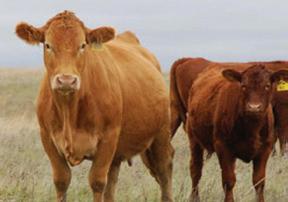
out for the first time, quickly adapt to the system. The older cows who are accustomed to roaming the range, take a lit tle longer to adapt. One article says a rancher can take up to two weeks to get the cattle to respond appropriately. Person ally, I’m not sure who is being the most trained, the cow or the rancher.
The University of Idaho has received a grant for a ‘four-year field project for researchers at U of I and Washington State Uni versity to test the safety and effi cacy of a prototype virtual fence system that uses novel features to manage cows, sheep and oth er grazing livestock with mini mal ecological footprint.” The rationale here seems to be a little different. Karen Launchbaugh, director of the U of I Rangeland Center, says, “As wildlife habitat becomes increasingly fragment ed and recreational activities on rangelands continue to grow, maintaining unobstructed cor ridors for movement of wildlife and humans is critical.”

More hikers and more wild life means more control over the rancher and his livestock.

All we need now is some vir tual post hole diggers, and may be even a virtual BLM range con.
Until next time, be a nui sance to the devil and don’t for get to check that cinch.
Frank DuBois was the NM Secretary of Agriculture from 1988 to 2003, is the author of a blog: The Westerner (www.thewesterner. blogspot.com) and is the founder of The DuBois Rodeo Scholarship and The DuBois Western Heritage Foundation
In last month’s column,
Invasive Asian Longhorned Tick Spreading Through US
BY LACEY VILHAUER / HIGH PLAINS JOURNAL
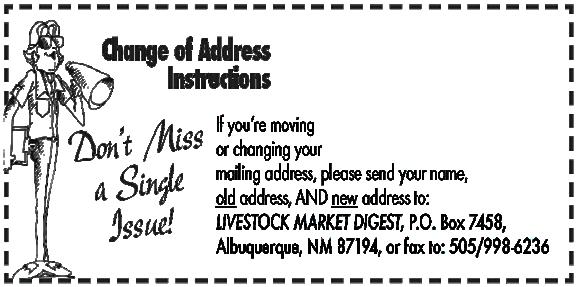
In a recent webinar, Dr. Denise Bonilla, DVM, cattle fever tick erad ication program man ager at U.S. Department of Ag riculture, discussed the Asian longhorned tick and its impacts on United States agriculture.

Known scientifically as Hae maphysalis longicornis, Asian longhorned ticks originated in northeast Asia and expanded into Australia and New Zea land. They were probably in troduced to the U.S. in the last 10 to 15 years, but the first confirmed case was on a sheep in New Jersey in 2017. Asian longhorned ticks have been confirmed in Arkansas, Con necticut, Delaware, Georgia, Kentucky, Maryland, Missouri, New Jersey, New York, North Carolina, Ohio, Pennsylvania, Rhode Island, South Carolina, Tennessee, Virginia, and West Virginia. Bonilla said Virginia leads the count with 38 known infested counties.
The presence of this tick in the U.S. is particularly concern ing because they are capable of asexual reproduction or parthe nogenesis. This allows females to lay eggs without mating with male ticks therefore tick popula tions can increase much faster. One female can generate 1,000 to 2,000 eggs at one time, ac cording to the USDA Animal and Plant Health Inspection Service. Asian longhorned ticks can transmit anaplasmosis, bo vine theileriosis and babesiosis. Asian longhorned ticks are
considered a possible vector for Severe Fever with Thrombocy topenia Syndrome Virus, which is an emerging infectious dis ease in China. Since the tick is not native to the U.S. research ers are not sure of this arach nid’s capabilities when it comes to carrying Lyme disease and Rocky Mountain Spotted Fever.
“These ticks vector protozoal, bacterial and viral pathogens to animals and humans,” Bonilla said. “There are good chances for this tick to potentially move into new areas and just because this tick hasn’t been confirmed in your state yet, it doesn’t mean that you’re not at risk of getting this tick where you live.”
Asian longhorned tick will infect and spread through wild life hosts such as deer, raccoons, possums, foxes, rabbit, ground hogs, skunks, birds and mice. Bonilla said Asian longhorned ticks are comparative in size to the deer tick commonly seen in the High Plains.
“These ticks don’t really like humans, but they will bite peo ple sometimes and we’re getting a lot of reports of larval ticks on kids that are playing outside,” she said. “We see a lot in dogs and it’s possible that they are moving ticks around when peo ple travel with them.”
She said although it is not known exactly how the ticks were introduced to the U.S., based on the genetics of the ticks that have been collected, there have been at least three different introductions into this
Cowboy Spurs
BY JIM OLSON
Spurs! Are they sim ply a tool used as a signal between horse and rider? Are they cowboy bling to be shown off and collected? Or perhaps in struments of torture? Depend ing on how they are used—and who you talk to—they can be all three.

The history and lineage of spurs is an important place to start—and it looks a bit like this: People have been using spurs just about as long as they have been riding. We know there are examples from the Celts and Ro mans. European horseman used them widely by the middle ages. Pretty much every horse cul ture, who also had knowledge of forging metal, used them. They first came across the Atlantic ocean into the North American continent in two ways; with the British, who brought them to the Northeastern part of what is now the United States and with the Spaniards, who brought them into “New Spain” or what is now Mexico.
The Spanish style spur was much larger and more ornate than those used by other Eu ropeans, and the lineage of to day’s Western style spur follows more closely with the Spaniard’s version. The Spanish style spur made its way north, into the American Southwest with the

country.
“Cattle seem to be one of the favorite hosts for these ticks, but they have also been found on sheep, goats and pigs,” she said. “Whatever livestock you produce, you need to be on the lookout for this tick.”
Apart from vectoring disease, animals can die from exsangui nation if enough are present. This means the ticks feed to the point where they drain the ani mal of blood and they can’t live anymore.
“We’ve seen situations like this where the animals don’t seem to be sick when they die, they just have thousands and thousands of ticks on them,” Bonilla explained. “The good news is we haven’t seen any pesticide resistance so far. Not all approved tick repellants or treatment for animals state they will work against Asian long horned ticks, but all repellents will still be effective against this pest.”
Page 10 Livestock Market Digest October 15, 2022 Kaddatz Auctioneering & Farm Equipment Sales New & Used parts, Tractor & Farm Equipment. Salvage yard: Tractors, Combines, Hay & Farm Equipment Online auctions: We can sell your farm, ranch & construction equipment anywhere in the U.S. 254-221-9271 Order parts online at www.farmstore.com – 15% rebate www.kaddatzequipment.com CLASSIFIEDS Willcox, AZ R.L. Robbs 520/384-3654 4995 Arzberger Rd. Willcox, Arizona 85643 BRANGUS BEEFMASTER 210.732.3132 • beefmasters.org 118 W BANDER A ROAD BOERNE, T X 78006 g•u•i•d •e Bradley 3 Ranch Ltd. www.bradley3ranch.com M.L. Bradley, 806/888-1062 Cell: 940/585-6471 Ranch-Raised ANGUS Bulls for Ranchers Since 1955 Annual Bull Sale February 11, 2023 at the Ranch NE of Estelline, TX angus
CORRECTION:
while discussing the Bison Preserve, I wrote the BLM had issued a grazing permit for sheep on 60.000 acress of federal land. That should hae been for bison, not sheep. ▫
▫
Photo of an adult female Asian long horned tick, Haemaphysalis longicor nis, on a blade of grass. (Photo cour tesy James Gathany via the Center for Disease Control and Prevention.)
o r n e r Collector 's
Conquistadores and other ex plorers. These expeditions then left behind herdsman to estab lish settlements and tend to livestock all across what is now northern Mexico and the Amer ican Southwest. These herds man transitioned over time into what eventually became known as the Mexican vaqueros. The descendants of these early set tlers were already tending to livestock when the first Amer icans came along and started learning how to ranch on open ranges during the infancy of the cowboy era in the 1800s. Histo ry tells us the Vaquero had a lot of influence over early cowboy gear—and the spur is no excep tion.
The very best horseman in the world understand that a pair of spurs is little more than a signaling tool between horse and rider. Vaqueros had be come fine horseman during the couple-hundred-year period between when the Spanish first introduced livestock to the area, up until the Americans came along and started developing their own ranches. During that time, a horseback culture had evolved to a level never seen be fore. It was not uncommon for a vaquero to be at a level of horse manship whereby he would show off by removing the bridle from his horse and perform dif ficult maneuvers using nothing more than body signals to guide his mount. It takes a highly trained animal to perform like this and a pair of spurs is one way signals are passed from rid er to horse. If a rider is abusive with spurs, naturally his mount would run off or buck, not per form at a high level of control. So to an expert horseman, a pair of spurs are definitely a signal ing tool.
On the other hand, a pair of spurs worn by the wrong rider can be used as an instrument of pain and can be a danger to both horse and rider. Unknowl edgeable people look at a pair of spurs (especially ones with large rowels) and imagine the worst. They don’t realize that spurs,
just like most anything else, can be used for bad or good depend ing on the user and application.
For example, a butter knife can be used to butter your bread, or to commit murder. A car can get your child to the doctor, or it can be used in a robbery.
And spurs can be used to signal a horse, or to harm one. It is how the instrument is used that matters and a pair of spurs to an experienced rider are useful tools—not items of torture.
Today, there are numer ous collectors from all parts of the world who collect spurs.
To many they are collectibles or even “cowboy bling.” Some spurs carry a pretty high price tag, and they are collected right along with many other forms of Western memorabilia. Among the most desirable spurs to an avid collector are antiques which have survived the test of time. If they were made by a well-known maker and are appealing visual ly (usually mounted with silver), they tend to be more valuable. However, modern-day cowboys also collect spurs from con temporary makers. It is like a badge of honor to wear a fancy pair of spurs by a sought after spur maker. A pair of spurs by a well-known contemporary ar tisan can often match or exceed the value of a pair made by a fa mous maker from 100 plus years ago. It really comes down to the taste of the collector or user.
The collector’s market remains very strong to this day for quali ty items and many spurs are put into collections where they will be on display and never see ac tual use again.
Who would have thought that a tool used by horsemen for over 2000 years would evolve into a form of cowboy art? Those Celtic and Roman blacksmiths would likely be amazed that the simple, almost crude, forms of spurs they used to make would evolve into an art form which can now-a-days sell for many thousands of dollars!
Finally, because of the dollar amount commanded by certain spur makers (of course there are
folks with low morals who will try to sell an inferior pair as be ing one that is highly desirable), fake hallmarks on spurs is not uncommon. The best rule is to always deal with reputable sell ers and also to educate yourself. Not everyone gets it right all of the time, but an honest seller
will not intentionally try to de fraud someone and on the rare occasion they get it wrong, they will make it right once the mis take is discovered. Always be cautious of a “buyer beware” sit uation when investing your hard earned money.
In conclusion, collecting
The View
THE BACK SIDE
BY BARRY DENTON
Get this, according to television sta tion KOB in Al buquerque, New Mexico, illegal immigration is up 267 percent over last year. Many are calling upon New Mexico’s Governor Grisham to help with the border situation, but their calls are unanswered.
According to Breitbart, Hildago County Sheriff, War ren Walter pleaded for help. “The citizens aren’t protected,” he said. “We need to have more manpower.”
“While I’ve been to this area of the border many times,” the governor stated. “I haven’t seen anything that indicates that we have an emergency crisis here at the border and that’s important to talk to New Mexicans about.
I also think it is important to talk to the nation about.”
Instead, Governor Grisham commits $10 million to build an abortion clinic near the south ern Texas border. Am I to sur mise that killing people is more important than saving them?
In Arizona illegal immigra tion is up almost 10 times that of New Mexico, at 4005 percent. During the month of August, Arizona governor Doug Du cey filled in 3,820 feet of open border areas near businesses in Yuma with double stacked ship ping containers.
“On the day that President Biden was sworn into office, he
spurs can be a fun and inter esting adventure. There is a lot to learn and a lot of history will be available to you. New doors will be opened and friendships made. You are encouraged to give it a try! Happy collect ing!
Things We Need to Take Care of
issued a proclamation order ing a pause in the construction of the border wall going up on our southern border,” Governor Ducey said. “Since then, ille gal activity in Yuma and other border communities have sky rocketed. Arizona could not just stand by and allow this situation to continue.”
While I commend Governor Ducey and the legislature for getting this accomplished, it is quite evident that much more needs to be done. However, re cently our Vice President Kama la Harris told us that the south ern border was secure.
Sheriffs from the southwest states, such as Arizona, Texas, New Mexico, and California are hosting a meeting in Co chise County, Arizona in Sep tember to discuss illegal human smuggling, kidnapping, and the increasing drug problem.
I would say that they are not buying Ms. Harris’s proclama tion that the border is secure.
On a positive note, here is a statistic that you will find inter esting, and I suspect that it is probably similar in your state.
According to Dr. Jim Lytle DVM, Wickenburg, Arizona, “two thirds of those of us that do ranch and food animal work are over 50 years of age with the majority being over 70 years old.”

One thing about it, we have some damn tough old vets help ing our ranchers in Arizona, but the problem is that there will
not be too many of them left to work in the near future.
Dr. Lytle’s objective is to create a self-sustaining fund to help disadvantaged ranch kids to receive a higher education after high school. He related that the cost of a veterinarian’s education is currently $180,000.
His thought is that if the fund could help defray the cost, then students might be more willing to come back to a rural area to practice. I think he is on to something here. If you care to find out more or help, you can contact Dr. Lytle at cow doc52@gmail.com.
In Yavapai County, Arizona, we have the country’s largest copper mine at Bagdad known as Freeport McMoRan. It has proposed to double in size, and it will need about 2800 tran sient workers for that expansion.
They want to build apart ment buildings for them in rural Kirkland, Arizona, which has a population of 1600. Then they would bus them to the mine that is 38 miles away.
They also want to add a store, gas station, sewer plant, parking, and so on, all on 100 acres. Es sentially, they will be urbanizing a rural area overnight if allowed to proceed.
The fight is on to try and save this beautiful and peaceful ranching area. I will keep you posted on this one. ▫

October 15, 2022 Livestock Market Digest Page 11
FROM
▫
Storms Field Then a Pro Bowl Linebacker Makes Him Regret It
BY ABBY LIEBING / THE WESTERN JOURNAL
Utah’s Circle Four Farms, took two piglets and are now facing criminal charges, SFGate re ported.
“That guy is headed to the slammer,” announcer Kevin Harlan said after the second protester was tackled and taken off the field.
Later, Direct Action Every where tweeted a press release,
not apologizing for what hap pened, but advocating for the members who are on trial for stealing the piglets from the Utah farm.
“BREAKING: Activist dis rupts MNF game with pink smoke flare to elevate the #SmithfieldTrial and support the #RightToRescue. If the masses are not allowed to see
D



uring the Mon day Night Foot ball game be tween the San Francisco 49ers and the Los An geles Rams, two animal rights protesters invaded the field, and the second one was tackled by the Rams’ pro bowl linebacker Bobby Wagner.
The first protester, wear ing a t-shirt that said “Right to Rescue,” ran on the field in San Francisco’s Levi’s Stadium during the first quarter but was caught by security, SFGate re ported.
The second protester made it further, leading security on a chase until Wagner tackled him to the ground, assisted by his teammate Takkarist McKinley,
NBC Sports report ed.
Since the protest ers were carrying pink smoke bombs across the field, at first, the announc ers thought it was perhaps some sort of gender reveal.

But the pro testers were from a group in the Bay area called Direct Action Everywhere, and they said they were protesting on behalf of members Wayne Hsiung and Paul Darwin Pick lesimer, who al legedly broke into
the trial, we will bring the issue to the masses,” the organization tweeted.
The press release from the activist group then went on to outline that Hsiung and Pickles imer “rescued” the pigs because they were sick and mistreated and to claim the resulting crim inal charges they were facing “typifies a troubling pattern of repression via a justice system that has been weaponized by powerful political interests … and is at odds with the public’s interest in transparency and due process.”
This group has staged pro tests like this at other major sporting events, such as the game between the Buffalo Bills and the Rams at SoFi Stadium on September 8, USA TODAY Sports reported.
The group also protested at NBA playoff games, particular ly at three separate Minnesota Timberwolves games, SFGate reported.
The video of the pitch in vader spread across Twitter and got particularly popular after the “Manningcast” shared it — with analysis from the Manning brothers, Eli and Peyton.
“Yes! That’s what we’re talking about. Wagner, a veter an, right, get him down, now get out and let these (security) guys take over,” Peyton commented.
Wagner has been playing in the NFL for 11 years and, despite the Rams’ loss to the 49ers, managed to get five tack les in the first half of the game, NBC Sports reported.
“While it surely was not the second protester’s intention to end up on Wagner’s highlight reel, they can now say they have been tackled by the eight-time Pro Bowl linebacker who is like ly headed to the Hall of Fame,” SFGate noted. “Granted, the incident showed how painful it can be to take a hit from an NFL defender.”
Animal Rights Protester
▫
Fluty and Taylor Monday before the game (Credit: Direct Action Everywhere)





















































